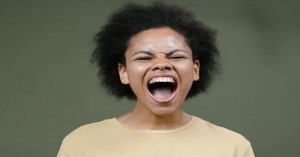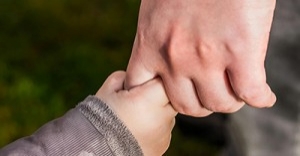Designing engaging outdoor learning spaces offers stimulating resources and rich play-based learning opportunities that cater to all children’s interests, capabilities, cultures, and communities. The following article provides information on Physical Features Of Outdoor Spaces, Characteristics Of Outdoor Learning Spaces, Consideration For The Design Of Outdoor Spaces, Roles Of Adults In The Outdoor Learning Spaces and more.
Physical Features Of Outdoor Spaces
Outdoor spaces support children in exploring and taking risks. The physical features and characteristics of the outdoor environment—such as space, playground design, access to natural environments, and availability of quality equipment and resources—influence children’s engagement in sustained, meaningful outdoor play experiences.
One way to think about the physical features and characteristics of the outdoor environment is by considering the affordances it offers. Affordances are the properties of the physical environment that invite us to do something or undertake a particular action. These affordances are dynamic and unique to each person, varying in response to the individual’s changing size, strength, capabilities, and motivation. Children perceive what they can do in the environment in relation to their individual characteristics. Hence, the same feature of the environment will afford different behaviors for different individuals or in different contexts.
For example, a small tree might afford climbing for a young child but not for a large adult. Similarly, a tree may provide shelter in summer but not in winter when its branches are bare, or it may allow children to collect fallen leaves in autumn.
Characteristics Of Outdoor Learning Spaces
Susan Herrington and Chandra Lesmeister's research identified seven key characteristics of outdoor environments that best support children's exploration, play, and learning in early childhood education settings. These characteristics are:
-
Character: The overall feel and design intent of the outdoor play space.
-
Context: The small world of the play space itself, the larger landscape that surrounds the center, and how they interact with each other, including micro-climatic conditions, ecology, and indigenous plantings.
-
Connectivity: The physical, visual, and cognitive connectivity of the play space itself, including visual and physical connectivity between the indoors and outdoors, between areas within the outdoor environment, and between the center and surrounding neighborhood.
-
Change: How the whole play space changes over time in response to changing weather and seasons and to children’s changing interests and needs, providing different-sized spaces for different kinds of play and experiences as well as access to materials and resources.
-
Chance: Opportunities for the child to create, manipulate, and leave an impression on the play space through open-endedness, flexibility, spontaneous exploration, and discovery.
-
Clarity: The physical layout and navigation within the environment, such as clear entries and exits to different zones/play spaces, ease of setting up and packing away, adequate storage, and awareness of the soundscape.
-
Challenge: The physical and cognitive possibilities for children to test their limits and expand their capabilities, including graduated challenges with several levels of difficulty.
These characteristics help create dynamic and enriching outdoor learning environments that support children's holistic development.
Consideration For The Design Of Outdoor Spaces
Rich outdoor learning environments are made possible by the seven qualities mentioned above. These qualities are helpful to take into account when designing outdoor areas.
Active areas and open spaces are essential for fostering physical play and exploration in children. Moveable equipment offers flexibility and adaptability, allowing the environment to evolve with children's changing interests and capabilities. Natural elements like rocks, trees, logs, and varied ground surfaces provide opportunities for children to engage in diverse physical activities, enhancing their balance and movement patterns.
Open spaces are versatile and can accommodate a range of activities, from running and ball games to dramatic play and block building. These elements not only support physical development but also encourage creativity, social interaction, and problem-solving skills.
Creative and explorative elements like sandpits, watercourses, rock formations, and varied ground surfaces are fantastic for inviting exploration and creativity. They provide natural loose parts that children can use in their play, encouraging imagination and symbolic play. Social spaces such as dens, cubbies, platforms, and amphitheatres are also essential as they offer places for children and adults to gather, engage in dramatic play, and foster social interactions.
These elements not only support physical development but also enhance cognitive and social skills, making the outdoor learning environment a rich and dynamic space for children to explore and grow.
Special features can significantly enhance play-based learning by adding unique and meaningful elements to the outdoor environment. Cultural references that reflect the diversity of the children and community can create a sense of belonging and inclusivity. Aesthetic and artistic elements, such as mosaic designs with pebbles or tiles, can add beauty and stimulate creativity. Decorative water containers like bird baths can attract wildlife, providing opportunities for children to observe and learn about animals. Animal enclosures can teach children responsibility and care for living creatures.
It's also crucial to consider the needs of adults in the environment. The space should be comfortable for adults, making it easy to supervise and set up experiences for children. This ensures that both children and adults can enjoy and benefit from the outdoor learning environment.
Inclusive environments indeed play a crucial role in fostering children's engagement and development. By offering flexible spaces that can be adapted to children's changing interests and capabilities, we create opportunities for deeper involvement and exploration. The dynamic nature of natural outdoor environments provides endless possibilities for new and unusual experiences, which are essential for stimulating curiosity and learning.
Providing stimulating resources, such as loose parts (both recycled objects and natural materials), is an excellent way to encourage creativity and imagination. These open-ended materials can be used, moved, and combined in various ways, allowing children to explore and experiment freely. It's also vital for teachers to ensure that children have ample time and freedom to become deeply involved in their activities, as this promotes sustained engagement and meaningful learning experiences.
Roles Of Adults In The Outdoor Learning Spaces
The role of adults in outdoor spaces is pivotal in shaping the learning experiences of children. The way Educators interact with children and the pedagogical practices they employ can significantly influence children's play, exploration, and active learning. Sustained, shared thinking is indeed a powerful approach to developing children's thinking and problem-solving skills.
Outdoor spaces offer countless opportunities for such thinking, and it's essential for teachers to plan environments that maximize these opportunities. Critical reflection on learning and teaching practices is crucial in this regard. Teachers can ask themselves questions like:
-
What might children do in this space?
-
What loose materials or resources might be added to enhance and challenge the child's knowledge and skills?
-
How can we learn here?
-
What might be the adult's role in this situation?
-
How can we continue our learning journey?
By reflecting on these questions, teachers can create environments that support a balance between child-initiated, child-led, adult-guided, and adult-led experiences, ensuring that the learning opportunities are rich and meaningful for all children.
Absolutely! Finding the right balance between different types of experiences is crucial for supporting children's play and learning. Teachers play a vital role in this process by employing a variety of strategies, such as observing, resourcing, facilitating, scaffolding, co-constructing, sustained shared thinking, and direct instruction. This approach ensures that the learning environment is dynamic and responsive to the needs and interests of the children.
By thoughtfully integrating these strategies, teachers can create a rich and engaging learning environment that promotes exploration, creativity, and critical thinking. This balance allows children to take the lead in their learning while also benefiting from the guidance and support of their teachers.
For settings with limited outdoor space, local excursions and community events are excellent ways to provide rich outdoor learning experiences. These activities help children connect with their community and engage with natural environments, fostering a sense of belonging and environmental awareness.
Utilizing local parks, playgrounds, and community gardens can expand children's experiences beyond the center. Participating in community events and projects, such as gardening or environmental clean-ups, can also support children's holistic development and provide opportunities for physical activity, social interaction, and learning about nature.
Further Reading
Benefits Of Outdoor Area
Taking Children's Sleep Time Outside In Early Childhood Settings
Creating Outdoor Spaces For Children In Early Learning Services
Outdoor Play With Babies
Incorporating Natural Elements In Outdoor Spaces
Reference:
Outdoor Learning Environments In Early Childhood Education, The Education Hub







 As an Educator in Australia, your pay rate falls under the Children’s Services Award 2010. This award states the minimum amount that an employer can
As an Educator in Australia, your pay rate falls under the Children’s Services Award 2010. This award states the minimum amount that an employer can When working as a qualified Early Childhood Teacher (with a university degree) within a service, your rate of pay will come from the Educational Services
When working as a qualified Early Childhood Teacher (with a university degree) within a service, your rate of pay will come from the Educational Services When working as a Diploma Qualified Educator your pay rate is from the Children's Services Award 2010. This Award states your minimum rate of pay
When working as a Diploma Qualified Educator your pay rate is from the Children's Services Award 2010. This Award states your minimum rate of pay When working as a Cert 3 Qualified Educator, your pay rate is from the Children's Services Award 2010. This Award states your minimum rate of
When working as a Cert 3 Qualified Educator, your pay rate is from the Children's Services Award 2010. This Award states your minimum rate of Educational Leaders play a crucial role in their early childhood service by ensuring that the educational program aligns with best practices and supports the holistic
Educational Leaders play a crucial role in their early childhood service by ensuring that the educational program aligns with best practices and supports the holistic In early childhood education and care, ratios are more than a technicality—they are a frontline safeguard. Every child deserves responsive supervision, emotional connection, and developmental
In early childhood education and care, ratios are more than a technicality—they are a frontline safeguard. Every child deserves responsive supervision, emotional connection, and developmental With the new national child safety reforms kicking in on 1 September 2025, early childhood services like yours have a real opportunity to lead the
With the new national child safety reforms kicking in on 1 September 2025, early childhood services like yours have a real opportunity to lead the Here’s a comprehensive Mobile Phone and Smart Watch Policy tailored for early childhood education and care (ECEC) services in Australia, aligned with the latest 2025
Here’s a comprehensive Mobile Phone and Smart Watch Policy tailored for early childhood education and care (ECEC) services in Australia, aligned with the latest 2025 The Sea of Fish Challenge is a national initiative that invites children, educators, families, and communities to create and display fish artworks as a symbol
The Sea of Fish Challenge is a national initiative that invites children, educators, families, and communities to create and display fish artworks as a symbol Across the early childhood education and care sector, educators are sounding the alarm: current staffing ratios are insufficient to deliver safe, meaningful, and developmentally appropriate
Across the early childhood education and care sector, educators are sounding the alarm: current staffing ratios are insufficient to deliver safe, meaningful, and developmentally appropriate


